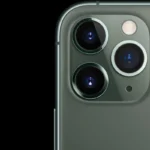In one of the most high-profile collaborations in recent tech history, famed former Apple designer Sir Jony Ive has officially joined forces with OpenAI to lead an ambitious new hardware initiative.
The move signals a bold expansion of OpenAI’s mission—pushing beyond software and language models like ChatGPT to shape the physical future of AI-powered devices.
A $6.5 Billion Bet on the Future of Human-AI Interaction
This sweeping partnership stems from OpenAI’s acquisition of io, a secretive hardware startup co-founded by Ive, in a deal valued at nearly $6.5 billion. While Ive himself will not become a direct employee of OpenAI, his design firm LoveFrom will remain at the creative helm of this endeavor. LoveFrom is tasked with spearheading the design language and user experience of a new class of AI-native devices.
The acquisition includes not just intellectual property, but also a powerhouse team of designers and engineers—many of them former Apple veterans. Among them are Tang Tan, Apple’s former head of iPhone and Watch design, and Evans Hankey, ex-head of Apple’s industrial design. The trio previously worked alongside Ive during his Apple tenure and bring deep experience in consumer hardware.
A Vision Beyond Screens
Ive and OpenAI CEO Sam Altman have reportedly been in talks about this vision since 2023, with the core idea revolving around reinventing the way people interact with AI. Rather than relying on smartphones or traditional interfaces, the team is reportedly exploring devices that are ambient, context-aware, and screenless—designed not around visual input but around natural interaction.
Although specific product details remain under wraps, speculation across the tech community suggests a range of AI-first devices—perhaps a next-generation assistant or “AI companion” with constant context-awareness, voice-based interface, and advanced on-device inference. This could place it in direct philosophical contrast with conventional smartphones or even smart speakers.
Why It Matters
This move positions OpenAI not just as a software company, but as a hardware innovator, directly competing with companies like Apple, Google, and Amazon in the consumer AI space. The partnership also aligns with Altman’s broader ambitions—he has publicly expressed interest in creating AI-native hardware that complements OpenAI’s models rather than retrofitting them into legacy platforms.

It also arrives at a time when regulators are increasingly scrutinizing App Store and operating system monopolies, leaving room for disruptive entrants who can bypass traditional smartphone gatekeepers. A dedicated hardware layer, designed with AI at its core, could allow OpenAI to control both the experience and ecosystem, much like Apple did with the iPhone in 2007.
Leadership and What Comes Next
The new io division will be led by OpenAI veteran Peter Welinder, while Ive, Tan, and other former Apple creatives will shape the look, feel, and usability of the hardware. The team is already operating out of a single campus, indicating the early phases of prototyping and internal testing.
The first consumer-facing products from this initiative are expected to debut in 2026—a timeline that reflects both the complexity and ambition of the effort. If successful, this could mark a paradigm shift in how AI becomes embedded into everyday life—not just through apps, but through tangible, intuitive, and beautifully crafted objects.
Final Thoughts
Jony Ive helped define the modern era of consumer technology with the iPhone, iMac, and iPad. With OpenAI, he may now help define its next era—where AI is not just something we interact with on a screen, but something that surrounds us, understands us, and blends seamlessly into our lives. For OpenAI, this isn’t just a hardware play—it’s a statement of intent: AI is no longer just code. It’s becoming an object.
Key Takeaways
- Jony Ive has teamed up with OpenAI’s Sam Altman to develop new AI hardware devices.
- Former Apple design experts, including iPhone design leader Tang Tan, have joined Ive’s team.
- The new AI hardware could introduce revolutionary ways for consumers to interact with artificial intelligence.
Jony Ive’s Role Leading OpenAI’s Hardware Division
Legendary designer Jony Ive is bringing his visionary approach to artificial intelligence hardware by teaming up with OpenAI. His collaboration marks a significant shift in how AI might be integrated into everyday devices, combining his user-centered design philosophy with cutting-edge AI technology.
Background and Achievements at Apple
Jony Ive spent nearly three decades at Apple, transforming the company’s products into design icons. As Apple’s Chief Design Officer, he led the teams that created the distinctive looks of the iPhone, iPad, and Mac computers.
His minimalist aesthetic helped Apple products stand out in the crowded tech market. The clean lines and intuitive interfaces became hallmarks of Apple’s approach to consumer electronics.
Ive’s work went beyond mere appearance. He pioneered the use of new materials in consumer electronics, including aluminum unibody construction and precision manufacturing techniques.
His design philosophy focused on removing complexity rather than adding features. This approach resulted in products that were both beautiful and easy to use, helping Apple become one of the world’s most valuable companies.
Vision for OpenAI’s Hardware Initiatives
Ive has confirmed his collaboration with OpenAI on a new AI hardware project. Unlike existing smart devices, Ive aims to create products that make AI more accessible and integrated into daily life.
His new venture has already begun taking shape. Ive has hired around 10 staffers for this AI hardware company, showing his commitment to building a strong team.
The project reportedly focuses on creating a mobile hardware product that will showcase OpenAI’s artificial intelligence capabilities. This device could redefine how people interact with AI technology.
Ive is converting one of his buildings into headquarters for this new venture, suggesting a startup-like approach rather than being fully absorbed into OpenAI’s existing structure.
Collaboration With Tech Industry Leaders
Ive is working directly with OpenAI CEO Sam Altman to bring this hardware vision to life. Their partnership combines Ive’s design expertise with Altman’s AI knowledge.
The team has attracted top talent from the tech sector. They’ve enlisted Apple veteran Tang Tan, who led iPhone design at Apple, adding crucial mobile hardware expertise to the project.
This collaboration stands out in a competitive AI hardware landscape that includes Microsoft, Nvidia, and other tech giants. Ive’s reputation for creating category-defining products makes this partnership particularly noteworthy.
While details remain limited, industry analysts expect the project to focus on creating more natural interfaces for interacting with AI systems. This approach could make artificial intelligence more approachable for everyday users.
Potential Impact on the Future of AI Hardware and Consumer Technology
The partnership between Jony Ive and OpenAI marks a pivotal moment in the evolution of AI hardware. Their collaboration could reshape how we interact with technology in our daily lives, bringing design excellence to intelligent devices.
Advancements in Intelligent Devices and Automation
Ive’s design philosophy, which transformed Apple products, will likely influence a new generation of AI hardware. His minimalist approach could make AI devices less socially disruptive than smartphones have been. This could mean more intuitive interfaces that blend into our environments.
OpenAI and Ive may focus on creating devices that emphasize voice interactions through ChatGPT rather than screens. Reports suggest they’re working on a screenless phone concept that could change how we use mobile technology.
The impact might extend to home automation, where AI-powered devices could anticipate needs rather than just respond to commands. Smart home systems could become more seamless and less intrusive with Ive’s design touch.
Virtual assistants may evolve beyond current limitations of Siri and similar technologies, with more natural language processing capabilities built into beautiful hardware.
Implications for Global Tech Markets
This partnership could spark a new competitive landscape in consumer electronics. Apple, Google, and Samsung might need to respond to what some are calling the “iPhone of artificial intelligence”.
Investment in AI hardware startups may surge as venture capital follows the trend set by Sam Altman and Ive. Their io Products startup is already attracting attention from OpenAI for potential acquisition.
Market shifts could occur as AI hardware becomes a new category that blends elements of:
- Smartphones
- Smart speakers
- Wearable technology
- Cloud computing devices
The semiconductor industry might see growing demand for specialized AI chips, creating new supply chains and manufacturing priorities.
Challenges and Opportunities in AI-Enabled Product Design
Balancing aesthetics with AI functionality presents unique design challenges. Ive must solve how to make powerful technology feel simple and accessible—a hallmark of his work at Apple.
Privacy concerns will need addressing as AI devices become more integrated into our lives. Ive’s design approach may include physical features that signal when AI is active, building trust through transparency.
Battery life and processing power remain technical hurdles. AI requires significant computing resources, which must be balanced with size and power constraints in consumer devices.
The opportunity exists to create new design languages specific to AI hardware. Just as the iPhone defined smartphone design, Ive and OpenAI might establish conventions for how AI devices should look and feel for years to come.
Frequently Asked Questions
The partnership between Jony Ive and OpenAI marks a significant shift in AI hardware development. Many questions have emerged about this collaboration and its potential impact on future technology.
What experience does Jony Ive bring to OpenAI, and how will it shape the company’s approach to hardware?
Jony Ive brings over 30 years of design excellence to OpenAI, including his legendary 27-year tenure at Apple. During this time, he created iconic products like the iPhone, iPad, and Apple Watch.
His minimalist design approach and focus on user experience will likely push OpenAI’s hardware toward more intuitive and elegant solutions. Ive’s expertise in marrying form and function could help make AI technology more accessible to everyday users.
His track record of turning complex technology into simple, beautiful products will be crucial as OpenAI ventures into consumer hardware.
With Jony Ive now leading OpenAI’s hardware division, what advancements in AI technology can we expect?
Reports suggest Ive is working on what some call an “iPhone of AI” – potentially a screenless device focused on voice interaction. This could represent a major shift away from traditional screen-based computing.
We might see AI hardware that blends seamlessly into daily life rather than demanding constant attention. Ive’s involvement points to devices that emphasize human-centered design principles.
The collaboration could yield products that make AI more natural to use and less dependent on typing or tapping interfaces. Think elegant, simple devices that hide technical complexity.
How will Jony Ive’s design philosophy influence the development and design of OpenAI’s hardware products?
Ive’s “form follows function” approach will likely result in AI hardware that feels essential rather than complicated. His focus on materials and manufacturing processes could bring new levels of quality to AI devices.
His design philosophy centers on simplicity, removing unnecessary elements until only what matters remains. This could translate to AI products that do fewer things but do them exceptionally well.
Ive has confirmed he’s working on a new device with OpenAI, suggesting his influence will be direct and substantial. Expect products that value quality, simplicity, and intuitive use.
What does Jony Ive’s appointment at OpenAI mean for the future collaboration between AI and design?
This partnership signals that AI’s next frontier is moving beyond software to thoughtfully designed physical products. It recognizes that AI adoption depends not just on capabilities but on how people experience the technology.
The collaboration may inspire other tech companies to place greater emphasis on design in AI hardware. Ive’s involvement lends credibility to the idea that AI products should be beautiful and approachable.
This move suggests a future where AI interfaces become more natural, perhaps moving beyond screens toward objects that fit naturally into our homes and lives.
How might the transition from Evans Hankey to Jony Ive impact the direction of hardware design at OpenAI?
While Evans Hankey maintained Apple’s design direction after Ive’s departure, Ive brings his original vision directly to OpenAI. This represents a fresh start rather than a continuation of existing OpenAI hardware efforts.
Ive may introduce more bold, revolutionary thinking compared to evolutionary approaches. His involvement suggests OpenAI is aiming for breakthrough products rather than incremental improvements.
The transition marks OpenAI’s serious commitment to creating consumer hardware rather than remaining primarily a software and research company.
In what capacity will Jony Ive’s company, LoveFrom, contribute to or collaborate with OpenAI on their hardware projects?
Ive has reportedly hired around 10 staffers for the new AI hardware company, suggesting LoveFrom will play a direct role in product development rather than just consulting.
LoveFrom may provide both design vision and technical expertise, leveraging Ive’s network of world-class designers and engineers. The arrangement appears to be a true partnership rather than a traditional client relationship.
OpenAI may be exploring acquiring Io Products, the startup Ive has been developing with OpenAI CEO Sam Altman. This suggests the relationship could become even more integrated in the future.







